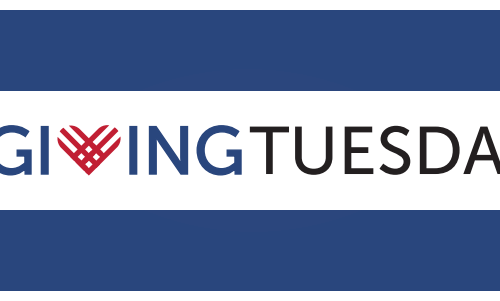Enhancing Donor Engagement: 6 Essential Communication Strategies
Donors are the heart and soul of nonprofit organizations, making it possible for vital programs and initiatives to thrive. Without their kindness and support, many nonprofits would struggle to achieve their goals. But it’s important to remember that strong donor relationships go beyond just financial support. Effective communication can turn these interactions into meaningful conversations, creating deeper connections and long-lasting engagement.
To truly connect with donors, nonprofits need to take a thoughtful and personalized approach that aligns with donors’ values, interests, and motivations. By understanding what matters most to them, nonprofits can tailor their messages to build a sense of community and shared purpose. Instead of just asking for donations, organizations should focus on building genuine relationships based on trust, openness, and mutual understanding.
In this guide, we’ll explore six key communication strategies that can enhance donor engagement and strengthen the bonds between nonprofits and their supporters. From segmenting donor lists to fostering a culture of gratitude, these tactics offer a roadmap for deepening connections and making a greater impact.
1. Tailor Your Messages for Different Groups
Recognizing that donors have diverse preferences and motivations is crucial for effective communication. A one-size-fits-all approach often falls short, as different donors may respond better to specific messaging or communication channels. By segmenting your donor lists, you can tailor your strategies to better resonate with each group’s unique characteristics and inclinations.
Donor segmentation can be based on various factors, such as age range, donation frequency or size, retirement status, marital status, and volunteer status. For instance, younger donors may prefer digital communication channels like email or social media, while older donors might appreciate traditional mail or phone calls.
Similarly, major donors who contribute substantial amounts may expect more personalized attention and communication than those who give smaller amounts.
Once you’ve segmented your donor lists, you can leverage this data to personalize your communications. Tailor your messaging, tone, and even the communication channel to align with each segment’s preferences. This personalized approach not only enhances the donor experience but also increases the likelihood of engagement and continued support.
Customer Relationship Management (CRM) systems can be invaluable tools for managing donor data and segmentation. These platforms allow you to store and analyze donor information, track interactions, and segment lists based on various criteria. With a robust CRM system in place, you can streamline your communication efforts and ensure that each donor receives tailored and relevant messages.
2. Keep Your Text Clear and Easy to Read
Effective communication hinges on clarity and simplicity. When crafting messages for your donors, it’s crucial to use language that is easily understood and engaging. By prioritizing readability, you create a more enjoyable and impactful experience for your audience.
One of the key factors in readability is your choice of fonts and text styles. For online communications, such as emails and website content, opt for clean, sans-serif fonts like Arial or Verdana. These fonts are designed for optimal legibility on digital screens.
When it comes to printed materials, like newsletters or brochures, consider serif fonts like Times New Roman or Georgia, which are easier on the eyes for longer passages of text.
Beyond font selection, it’s essential to adopt a conversational tone that resonates with your donors. Aim to write at a sixth-grade reading level, using simple language and avoiding complex jargon or technical terms. This approachable style ensures that your message is accessible to a wide range of readers, fostering a sense of connection and understanding.
Remember, your donors are not just numbers or transactions; they are individuals with diverse backgrounds and experiences. By embracing a conversational tone, you create a more personal and engaging experience, making your donors feel valued and understood. Avoid overly formal or stuffy language, as it can create an unnecessary barrier between your organization and your supporters.
3. Stay in Touch Regularly
Donor relationships shouldn’t begin and end with a solicitation and thank-you note. Successful nonprofits understand the necessity of continuous interaction to keep donors engaged and invested in the organization’s mission.
There are numerous ways to maintain an ongoing dialogue with your donor base. Regular newsletters can provide updates on recent initiatives, success stories, and upcoming events. Inviting donors to volunteer opportunities allows them to get hands-on experience and witness your work firsthand. Even something as simple as a quarterly email update can go a long way in making donors feel valued and part of the community.
Perhaps most importantly, your communications should include mechanisms for feedback and involvement. Surveys, focus groups, and open forums give donors a voice and the opportunity to share their perspectives. This two-way dialogue not only strengthens the relationship but also provides valuable insights to inform your strategies and better align your efforts with donor interests and motivations.
Ultimately, ongoing communication is about fostering a sense of connection and ownership. When donors feel like active participants rather than passive contributors, they are far more likely to remain engaged and continue supporting your vital work.
4. Relate to Donors’ Values and Experiences
Donors are more likely to engage with and support causes that resonate with their personal values and experiences. By aligning your nonprofit’s communications with donors’ core beliefs and backgrounds, you can forge deeper connections and inspire greater commitment.
One effective technique is to craft personalized messages that tap into donors’ motivations and values. This could involve highlighting how your organization’s mission aligns with their interests, passions, or life experiences. For example, if a donor has a personal connection to a particular cause, share stories and updates that directly relate to their experiences.
To better understand your donors and build stronger relationships, consider asking questions that uncover their motivations, values, and personal stories. This could be done through surveys, interviews, or even casual conversations. Some suggested questions include:
– What causes or issues are most important to you, and why?
– What personal experiences have shaped your interest in our mission?
– What impact would you like to see our organization have in the community or world?
By actively listening to your donors and tailoring your communications to their unique perspectives and backgrounds, you can create a deeper sense of connection and belonging. This personalized approach not only strengthens donor engagement but also fosters a more meaningful and rewarding experience for both parties.
5. Share the Big Picture Vision
Donors are essential partners in your nonprofit’s mission, and it’s crucial to help them visualize the broader impact their contributions have on the lives you touch. By painting a vivid picture of the “big picture,” you foster a deeper connection between your supporters and the cause they care about.
Share compelling success stories that showcase how your organization has positively impacted individuals, communities, or the environment. These narratives bring your work to life, allowing donors to see the tangible difference their generosity makes. Supplement these stories with powerful visuals, such as photographs or videos of the beneficiaries, to create an emotional connection.
Additionally, outline your organization’s future goals and aspirations. Help donors understand how their support will shape the trajectory of your efforts, enabling you to expand your reach and amplify your impact. Illustrate how their contributions today will pave the way for even greater achievements tomorrow.
By painting a vivid picture of the “big picture,” you empower donors to see themselves as integral contributors to a larger movement. They become part of a collective effort, working alongside your organization to create positive change. This sense of purpose and connection can deepen their commitment and inspire them to continue supporting your mission.
6. Cultivate a Community Built on Gratitude
Expressing heartfelt gratitude is a powerful way to foster a sense of community among your donors. By making them feel truly appreciated, you create a strong emotional connection that goes beyond mere transactions. A culture of gratitude strengthens the bond between your nonprofit and its supporters, leading to higher donor retention rates and increased satisfaction.
One simple yet effective technique is to send regular thank-you messages. These can take various forms, such as handwritten notes, personalized emails, or even video messages. The key is to make each message feel genuine and tailored to the individual donor, acknowledging their specific contribution and its impact.
Another way to cultivate gratitude is through recognition events. These can range from intimate gatherings to larger-scale celebrations, where donors are publicly honored and their generosity is celebrated. Such events provide an opportunity to showcase the tangible results of their support and foster a sense of community among like-minded individuals.
Public acknowledgments, whether through social media, newsletters, or your website, can also go a long way in making donors feel valued. Sharing their stories and highlighting their contributions not only expresses gratitude but also inspires others to get involved.
By consistently expressing gratitude and making donors feel appreciated, you create a loyal and engaged community that is more likely to continue supporting your cause. A grateful community not only enhances donor retention but also encourages increased giving, as donors feel a deeper connection to your organization and its mission.
Wrapping Up
Enhancing donor engagement is crucial for the success of any nonprofit organization. By implementing the six essential communication strategies outlined in this article, you can cultivate deeper connections with your donors and foster a sense of community around your cause.
Recap these strategies: segmenting your donor lists, using clear and readable language, planning for ongoing communication, connecting with donors’ values and experiences, painting a picture of the broader impact, and cultivating a culture of gratitude. Each tactic plays a vital role in strengthening your relationships with donors and ensuring their continued support.
However, it’s important to remember that these strategies are not one-size-fits-all solutions. Tailor them to align with your nonprofit’s unique mission, values, and donor base. Blend these tactics with your organization’s distinct personality and voice to create a communication approach that resonates with your donors on a personal level.
Effective communication is an ongoing process, not a one-time effort. By consistently implementing these strategies and adapting them to your nonprofit’s evolving needs, you can foster long-lasting relationships with your donors. These strong connections will not only increase donor retention and satisfaction but also contribute to the overall success and impact of your organization’s mission.




